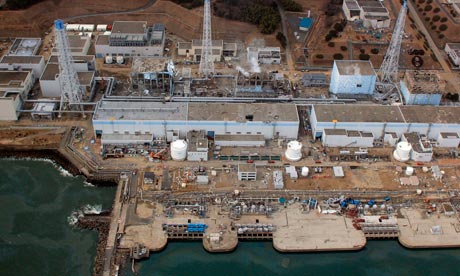The 9.0 magnitude earthquake and following tsunami on March 11 has seen a rush by officials to gain control of power plants in the north-east of the country and have been under pressure to resolve the situation.
Today it has been revealed that studies show the nuclear leak could be double the estimated amount when the disaster first occurred. Justin McCurry writes:
"The amount of radiation released by the Fukushima Daiichi nuclear power plant in the days after the 11 March tsunami could have been more than double that originally estimated by its operator, Japan's nuclear safety agency has said.
The revelation has raised fears that the situation at the plant, where fuel in three reactors suffered meltdown, was more serious than government officials have acknowledged."
Last month The World Bank estimated the cost of the nuclear crisis at $235bn (£144bn) - making it one of the world's most expensive disasters.
The operators of the plant, Tokyo Electric Power (Tepco), announced record losses of 1.25 trillion yen (£9.5bn) as they struggle with the nuclear crisis still present. Tepco also announced last month that there is data that would indicate that during the immediate aftermath of the earthquake and tsunami, the fuel rods in three of the reactors had melted.
Although it may be some time after the radiation levels at the Fukushima Daiichi nuclear power plant rose: the severity level changed from five to seven - the same level as Chernobyl in 1986, the Fukushima plant is still being focused on as more information and images appear.
Fukushima nuclear power plant has been closely scrutinised as reports flow in on the progress of the situation - Japan's nuclear board previously raised the nuclear alert level from four to five in the weeks following the disaster and the JAIF warned of products such as dairy and spinach being restricted for shipping. Explosions and reports of nuclear fuel rods melting at the power plant have meant progress on the situation has been closely followed as has the environmental effects with concerns for marine life and spreading radiation through seawater. There were also concerns over radioactive dirt found in a school playground in Fukushima.
Industry body the Japan Atomic Industrial Forum are currently publishing daily updates of the status of power plants in Fukushima which give great detail into the condition of each reactor. Ranked from a level of low to severe, the update records the conditions of core and fuel integrity, water level and containment amongst other key information. These are some of the most in-depth and recent records and show how the crisis is being handled.
The table below shows the status of the reactors in the Fukushima Daiichi (the largest of the Fukushima power plants) and is colour coded to show the severity. Green for low, yellow represents high and red shows those of severe significance as judged by the JAIF. We have used JAIF's update 154 as of 12:00 local time as this is the most up to the minute data we can get. The format of these reports has changed as of 6th June 2011 and are now focused on countermeasures and only reactors one to four, therefore some of the details collated before are now unavailable. For full details you can download the report from JAIF.
A table of major incidents and accidents at the plants can be found in our spreadsheet as can the data for Daini, Onagawa and Tokai Daini Nuclear power stations. What can you do with this data?
Data summary
Download the data
• DATA: download the full spreadsheet
More data
Data journalism and data visualisations from the Guardian
World government data
• Search the world's government data with our gateway
Development and aid data
• Search the world's global development data with our gateway
Can you do something with this data?
• Flickr Please post your visualisations and mash-ups on our Flickr group
• Contact us at data@guardian.co.uk
• Get the A-Z of data
• More at the Datastore directory
• Follow us on Twitter
• Like us on Facebook

